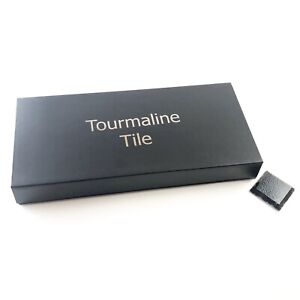If block emf radiation reside in a house or apartment, or you just would like to ensure your home is free of EMFs There are plenty options to limit your exposure. One of the most effective is to limit your use of electronic devices. You can also turn to EMF blocker paint to block EMF radiation from reaching your home. http://cavecut28.xtgem.com/__xt_blog/__xtblog_entry/__xtblog_entry/33702351-facts-about-emf-blocking-radiation?__xtblog_block_id=1#xt_blog to protect your house from EMF radiation is to put up an RF shielding canopy. It is a type of net that contains EMF shielding. It's used to prevent EMFs from entering a space. Another alternative is to have your home equipped with an electrical enclosure. These enclosures are known as Faraday cages.

Numerous studies have demonstrated how the non-ionizing energy of RF can cause antiproliferative effects on HCC cells. The mechanism of AM RF EMF's anticancer activity in vitro is believed to result from the deregulation of cancer stem cells. This could explain the long-term response seen in patients suffering from advanced HCC. But, the reason for AM EMF's effects on patients suffering from cancer isn't yet clear.
Effects on the effects of AM RF EMF on HCC tumor growth in vivo were examined in mice. The tumours were divided in three different groups. The first group was not exposed to RF EMF. Second group members were exposed to RF EMF at a frequency that is similar to the one used by humans. Third group members were exposed to RF EMF at HCC-specific modulation frequencies. The impact of HCCMF on the tumours was compared to that of RCF. The results showed that the tumours treated with HCCMF had significant shrinkage. However, the tumours treated with RCF showed no evidence of tumour shrinkage.
block emf for tumour-specific AM RF EMF could be based on the fact that cancer cells require Cav3*2 type voltage calcium channels for their proliferation and down-regulation. AM RF EMF's antiproliferative effects on HCC cells is controlled through CACNA1H the protein that is responsible for the influx of Ca2+ specific to tumours. The findings suggest that CACNA1H could have wider implications for the diagnosis and treatment of various cancers.
The tumours in the controls were never exposed to EMF from RF, and fed a standard mouse diet. The tumours in those in the HCCMF group were injected with Huh7 cells when they were between five and seven weeks old. The tumours were then euthanized in cases of excessive burden.
The tumors of the three groups also showed distinct growth curves. The tumors treated with HCCMF showed a significant decrease in tumour size after eight weeks. However, the tumors that were treated using RCF did not show any signs of shrinkage. The difference was highly significant. The tumors treated by RCF were able to show necrosis, which is typical in tumors that have been that are exposed to RCF. The possibility is that the necrosis is caused by the lack of oxygen in the larger tumors.
In summary, the results show the fact that AM EMF exhibits anticancer effects in vitro and in live. Several studies have shown it is true that AM RF EMF produces measurable reduction in tumours within HCC patients. There is a possibility that AM RF EMF causes these effects due to CACNA1H which is a protein involved in the process of tissue-specific Ca2+ influx. In addition, AM RF EMF may exert a sustained effect on the development of HCC tumors in living tissue.
